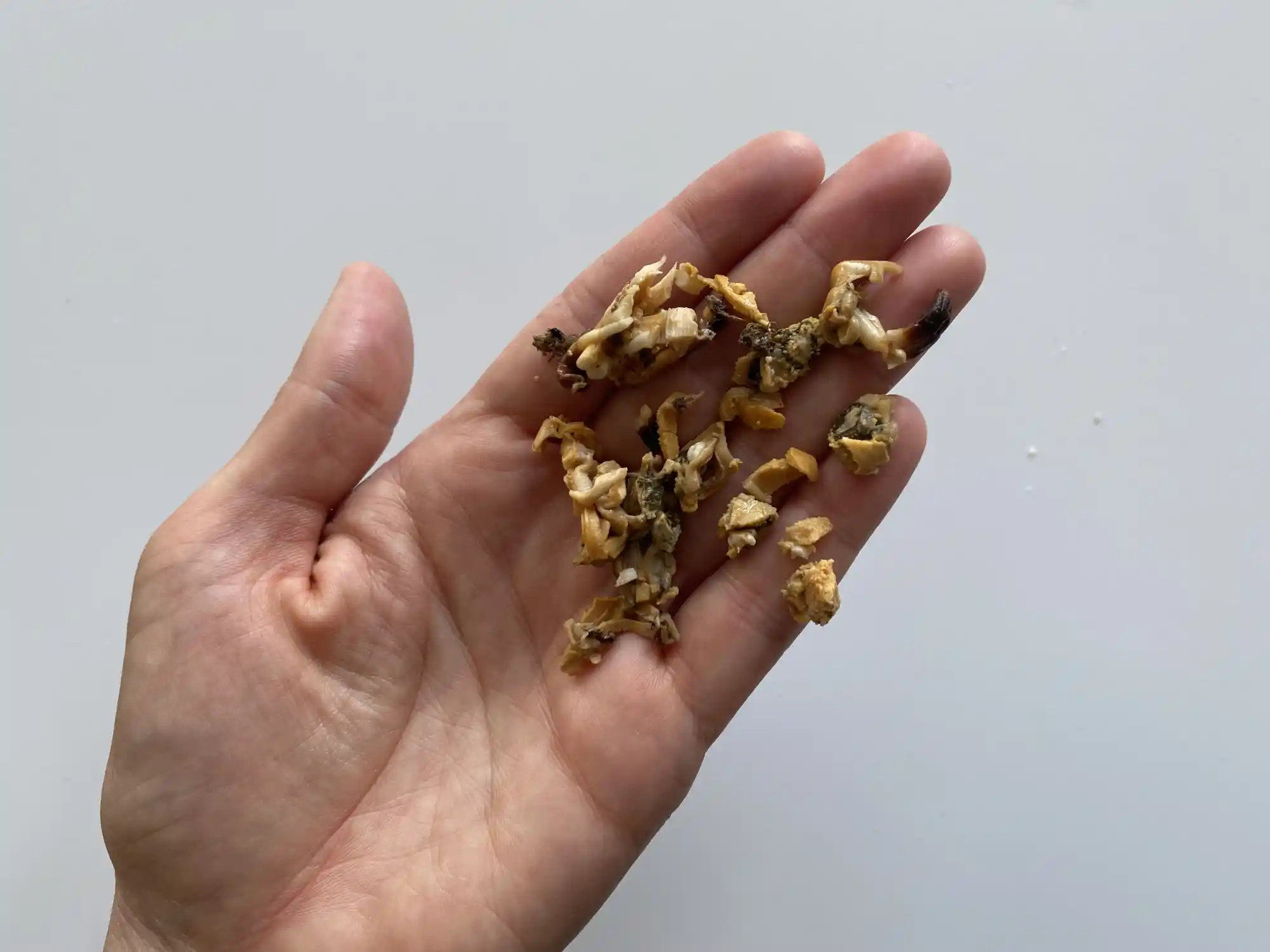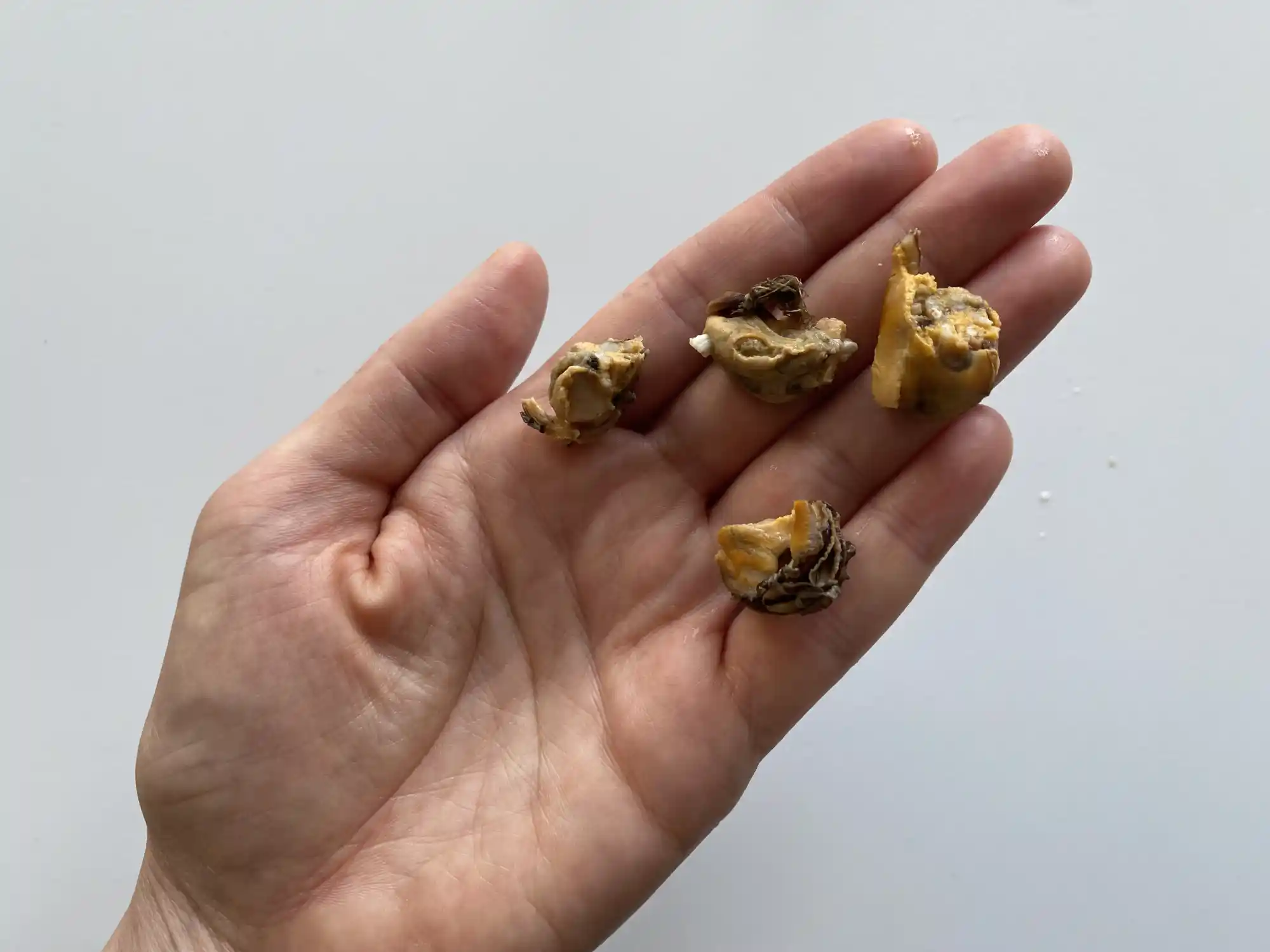Access our First Foods® Database in the Solid Starts App.
Learn moreMussels
Shellfish
Age Suggestion
6 months
Iron-Rich
Yes
Common Allergen
No

Warning
Cook mussels thoroughly before serving to babies. Mussels carry an elevated risk of foodborne illness, and babies are more at risk for severe symptoms.
When can babies have mussels?
Mussels may be introduced as soon as baby is ready to start solids, which is generally around 6 months of age.
Mussels can be found in fresh water and coastal tidal zones worldwide. While there are many species of mussels within its sprawling family tree, many on the market come from aquaculture farms, including the robust mussel farming industry in China, where mussels are grown on long ropes anchored to the sea floor.
How do you serve mussels to babies?
Every baby develops on their own timeline, and the suggestions on how to cut or prepare particular foods are generalizations for a broad audience.
6 months old +:
Serve thoroughly cooked or canned mussels that have been finely chopped and mixed into a soft, scoopable food, such as mashed vegetables or sour cream.
9 months old +:
Finely chop or thinly slice mussels that have been thoroughly cooked. Serve the mussels on their own or, if baby struggles to pick up the slippery pieces, mix them into other foods like pasta, rice, or stew.
18 months old +:
Serve cooked mussels in bite-sized pieces or thin slices, either on their own or as part of a meal. You can also finely chop and mix the pieces into a scoopable food.
24 months old +:
When you feel the child is ready, you can try offering whole, cooked or canned mussels. These require a lot of chewing to break down in the mouth, so only offer whole mussels when you are confident the child can and will use their molars to chew. Try modeling before serving whole mussels: Open your mouth, place the piece of food on your molars and explain, “I am using my strong back teeth to chew this, and I have to chew it A LOT.” Chew with your mouth open, and you may want to count to 10 and model the motion of chewing with your hands as you do it. Before you swallow, open your mouth and show them how broken down the food is. Then, hand over a mussel and let them try to do the same thing you did. Lastly, know that toddlers will frequently spit out bites of food as they learn how to chew challenging textures—this doesn’t mean they dislike the food, only that they are learning.


Are mussels a choking hazard for babies?
Yes. Mussels are firm, rubbery, and slippery, qualities that increase the risk of choking. To reduce the risk, prepare and serve mussels in an age-appropriate way. As always, make sure you create a safe eating environment and stay within an arm’s reach of baby during meals.
Learn the signs of choking and gagging and more about choking first aid in our free guides, Infant Rescue and Toddler Rescue.
Are mussels a common allergen?
No. Although part of the larger shellfish family, mollusks (like mussels) are not classified as a Global Priority Allergen by the World Health Organization, which only considers crustacean shellfish to be a priority allergen. However, a number of regulatory agencies around the world group the two types of shellfish together and label mollusks as common food allergens alongside crustaceans. Interestingly, shellfish allergies commonly develop in adulthood rather than in children. For those who develop the allergy in childhood, most will not outgrow it.
Individuals with a mussels allergy are more likely to experience reactions to other shellfish in the mollusk family (clam, octopus, oyster, scallop, snail, squid) and also have a >70% risk of reacting to shellfish in the crustacean family (crawfish, crab, lobster, shrimp). If you suspect baby may be allergic to shellfish, consult an allergist before introducing mussels.
As they are not closely related, being allergic to shellfish does not mean that an individual will also have a finned fish allergy. However, you may need to be careful about the risk of shellfish proteins cross-contaminating finned fish and other seafood, as they are often prepared in the same facilities using shared tools and cooking materials.
As you would do with any new food, introduce mussels by serving a small quantity at first and watching closely for signs of any adverse reaction. If all goes well, gradually increase the quantity over future meals.
Are mussels healthy for babies?
Yes. Mussels are rich in protein and offer essential nutrients like omega-3 fatty acids, vitamins B6 and B12, folate, zinc, iron, and selenium. Depending on where they come from, mussels can contain varying levels of cadmium, a heavy metal that can negatively affect neurological development when consumed in excess. No food is perfect, so if the family regularly enjoys mussels, aim to offer them as one part of a variety of foods in the diet.
Mussels, like most seafood, carry an increased risk of foodborne illness from a variety of bacteria, including vibriosis. When cooking mussels, take great care to ensure they are fresh and of good quality and make sure to cook them thoroughly.
When can babies have canned mussels?
As long as the mussels are finely chopped to reduce choking risk, babies can have canned mussels as soon as they are ready for solids, generally around 6 months of age. If you would like to reduce sodium in baby’s food, you can choose a low-sodium or no-salt-added brand, when available. Learn more about sodium and babies on our Sodium FAQ page.
When can babies have raw mussels?
There is no age at which eating raw mussels is without risk, so whether or when to serve raw mussels is a personal decision for which you must calculate risk. Raw mussels pose a very high risk of foodborne illness, especially Vibrio, a harmful bacteria that causes watery diarrhea among other symptoms in babies, children, and adults alike. The risk of severe illness is even higher in individuals with complex medical backgrounds, taking stomach acid reducing medications, and/or who are immunocompromised. Cooking shellfish to an internal temperature of 145 F (63 C) helps to kill bacteria in the food.
Our Team
Written by
Expert Tips Delivered to Your Inbox
Sign up for weekly tips, recipes and more!
Copyright © 2025 • Solid Starts Inc






